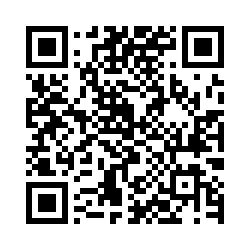
A SPARQCode is a matrix code (or two-dimensional bar code) encoding standard that is based on the physical QR Code definition created by Japanese corporation Denso-Wave.

A SPARQCode is a matrix code (or two-dimensional bar code) encoding standard that is based on the physical QR Code definition created by Japanese corporation Denso-Wave.
The QR Code standard as defined by Denso-Wave in ISO/IEC 18004 covers the physical encoding method of a binary data stream. [1] However, the Denso-Wave standard lacks an encoding standard for interpreting the data stream on the application layer for decoding URLs, phone numbers, and all other data types. NTT Docomo has established de facto standards for encoding some data types such as URLs, and contact information in Japan, but not all applications in other countries adhere to this convention as listed by the open-source project "zxing" for QR Code data types. [2] [3]

The SPARQCode encoding standard specifies a convention for the following encoding data types.
The SPARQCode convention also recommends but does not require the inclusion of visual pictograms to denote the type of encoded data.
The use of the SPARQCode is free of any license. The term SPARQCode itself is a trademark of MSKYNET, but has chosen to open it to be royalty-free. [4]

A barcode or bar code is a method of representing data in a visual, machine-readable form. Initially, barcodes represented data by varying the widths, spacings and sizes of parallel lines. These barcodes, now commonly referred to as linear or one-dimensional (1D), can be scanned by special optical scanners, called barcode readers, of which there are several types.

Mobile payment, also referred to as mobile money, mobile money transfer and mobile wallet, is any of various payment processing services operated under financial regulations and performed from or via a mobile device. Instead of paying with cash, cheque, or credit card, a consumer can use a payment app on a mobile device to pay for a wide range of services and digital or hard goods. Although the concept of using non-coin-based currency systems has a long history, it is only in the 21st century that the technology to support such systems has become widely available.
vCard, also known as VCF, is a file format standard for electronic business cards. vCards can be attached to e-mail messages, sent via Multimedia Messaging Service (MMS), on the World Wide Web, instant messaging, NFC or through QR code. They can contain name and address information, phone numbers, e-mail addresses, URLs, logos, photographs, and audio clips.

A barcode reader or barcode scanner is an optical scanner that can read printed barcodes, decode the data contained in the barcode on a computer. Like a flatbed scanner, it consists of a light source, a lens, and a light sensor for translating optical impulses into electrical signals. Additionally, nearly all barcode readers contain decoder circuitry that can analyse the barcode's image data provided by the sensor and send the barcode's content to the scanner's output port.

Semacode is a software company based in Waterloo, Ontario, Canada. It is also this company's trade name for their machine-readable ISO/IEC 16022 Data Matrix barcodes, which are used to encode Internet URLs.

A QR code is a type of two-dimensional matrix barcode, invented in 1994, by Japanese company Denso Wave for labelling automobile parts. A QR code consists of black squares arranged in a square grid on a white background, including some fiducial markers, which can be read by an imaging device, such as a camera, and processed using Reed–Solomon error correction until the image can be appropriately interpreted. The required data are then extracted from patterns that are present in both the horizontal and the vertical components of the QR image.

A Data Matrix is a two-dimensional code consisting of black and white "cells" or dots arranged in either a square or rectangular pattern, also known as a matrix. The information to be encoded can be text or numeric data. Usual data size is from a few bytes up to 1556 bytes. The length of the encoded data depends on the number of cells in the matrix. Error correction codes are often used to increase reliability: even if one or more cells are damaged so it is unreadable, the message can still be read. A Data Matrix symbol can store up to 2,335 alphanumeric characters.
Object hyperlinking is a term that refers to extending the Internet to objects and locations in the real world. Object hyperlinking aims to extend the Internet to the physical world by attaching tags with URLs to tangible objects or locations. These object tags can then be read by a wireless mobile device and information about objects and locations retrieved and displayed.

Windows Live Barcode was a part of Microsoft's Windows Live services. It allowed users to transfer information between various media and handsets via Quick Response Code, a two-dimensional matrix barcode. It provided a method for people to exchange information and use various online services on handsets.

High Capacity Color Barcode (HCCB) is a technology developed by Microsoft for encoding data in a 2D "barcode" using clusters of colored triangles instead of the square pixels conventionally associated with 2D barcodes or QR codes. Data density is increased by using a palette of 4 or 8 colors for the triangles, although HCCB also permits the use of black and white when necessary. It has been licensed by the ISAN International Agency for use in its International Standard Audiovisual Number standard, and serves as the basis for the Microsoft Tag mobile tagging application.
Direct part marking (DPM) is a process to permanently mark parts with product information including serial numbers, part numbers, date codes, and barcodes. This is done to allow the tracking of parts through the full life cycle.
Mobile tagging is the process of providing data read from tags for display on mobile devices, commonly encoded in a two-dimensional barcode, using the camera of a camera phone as the reader device. The contents of the tag code is usually a URL for information addressed and accessible through Internet.

The application Barcode Scanner is an Android app, from the open-source project ZXing, that allows an Android device with imaging hardware to scan barcodes or 2D barcodes and retrieve the data encoded. Information encoded often includes web addresses, geographical coordinates, and small pieces of text, in addition to commercial product codes. This Android-based system has similar functionality to a hardware barcode reader.
The ucode system is an identification number system that can be used to identify things in the real world uniquely. Digital information can be associated with objects and places, and the associated information can be retrieved by using ucode.

Short Payment Descriptor is a compact data format for an easy exchange of payment information using modern electronic channels, such as smart phones or NFC devices. Practically, the format is being deployed in the Czech Republic and the Slovak Republic, but the format can be technically used with any bank using IBAN account numbers. That includes currently the majority of European countries, some in the Middle East and a few others.

Screen-Smart Device Interaction (SSI) is fairly new technology developed as a sub-branch of Digital Signage.
QR code payment is a contactless payment method where payment is performed by scanning a QR code from a mobile app. This is an alternative to doing electronic funds transfer at point of sale using a payment terminal. This avoids a lot of the infrastructure traditionally associated with electronic payments such as payment cards, payment networks, payment terminal and merchant accounts.
Barcode library or Barcode SDK is a software library that can be used to add barcode features to desktop, web, mobile or embedded applications. Barcode library presents sets of subroutines or objects which allow to create barcode images and put them on surfaces or recognize machine-encoded text / data from scanned or captured by camera images with embedded barcodes. The library can support two modes: generation and recognition mode, some libraries support barcode reading and writing in the same way, but some libraries support only one mode.

Masahiro Hara is a Japanese engineer and Hosei University graduate who is best known for inventing the QR code in 1994.

Han Xin code is two-dimensional (2D) matrix barcode symbology invented in 2007 by Chinese company The Article Numbering Center of China to break monopoly of QR code. As QR code, Han Xin code consists of black squares and white square spaces arranged in a square grid on a white background. It has four finder patterns and other markers which allow to recognize it with camera-based readers. Han Xin code contains Reed–Solomon error correction with ability to read corrupted images. At this time, it is issued as ISO/IEC 20830:2021.